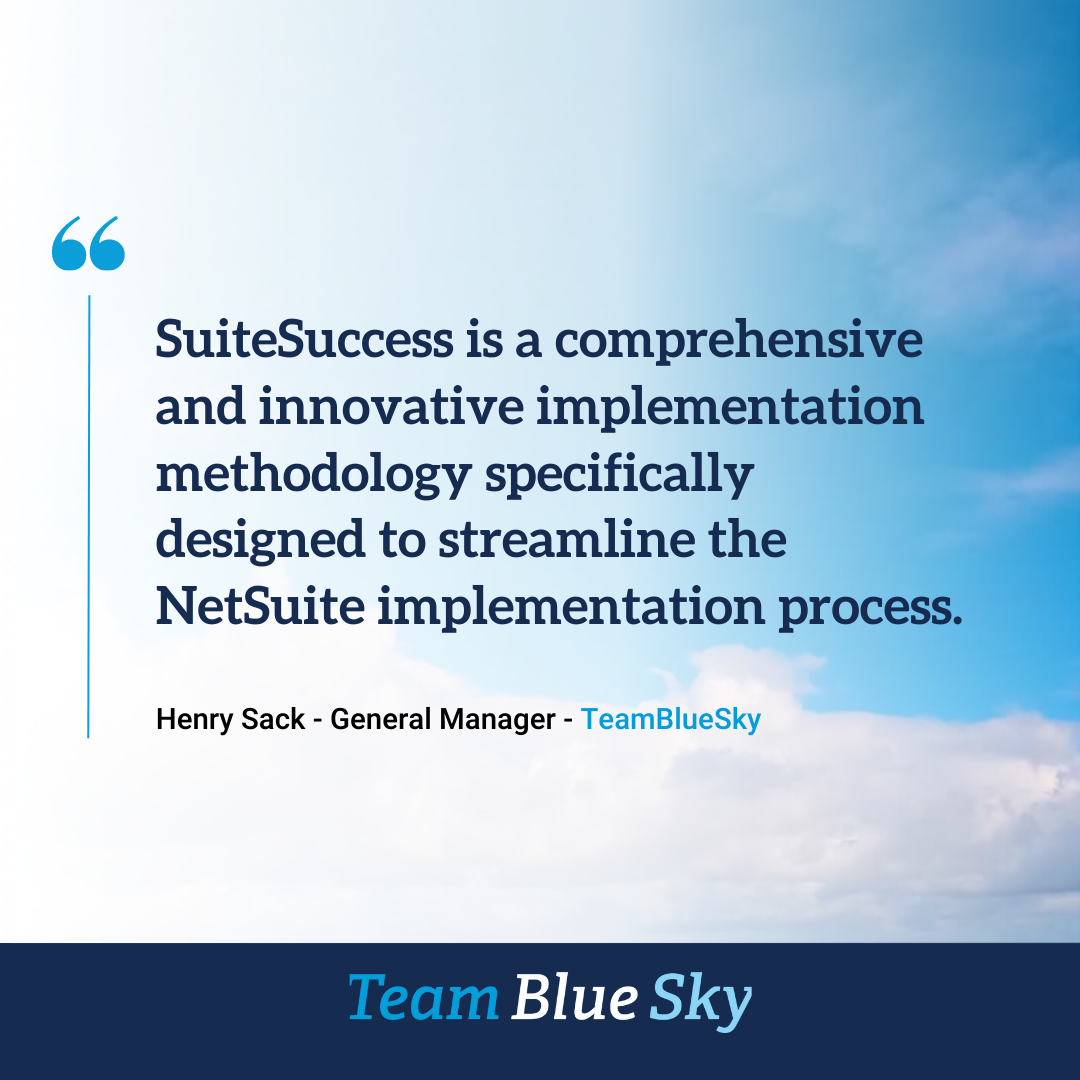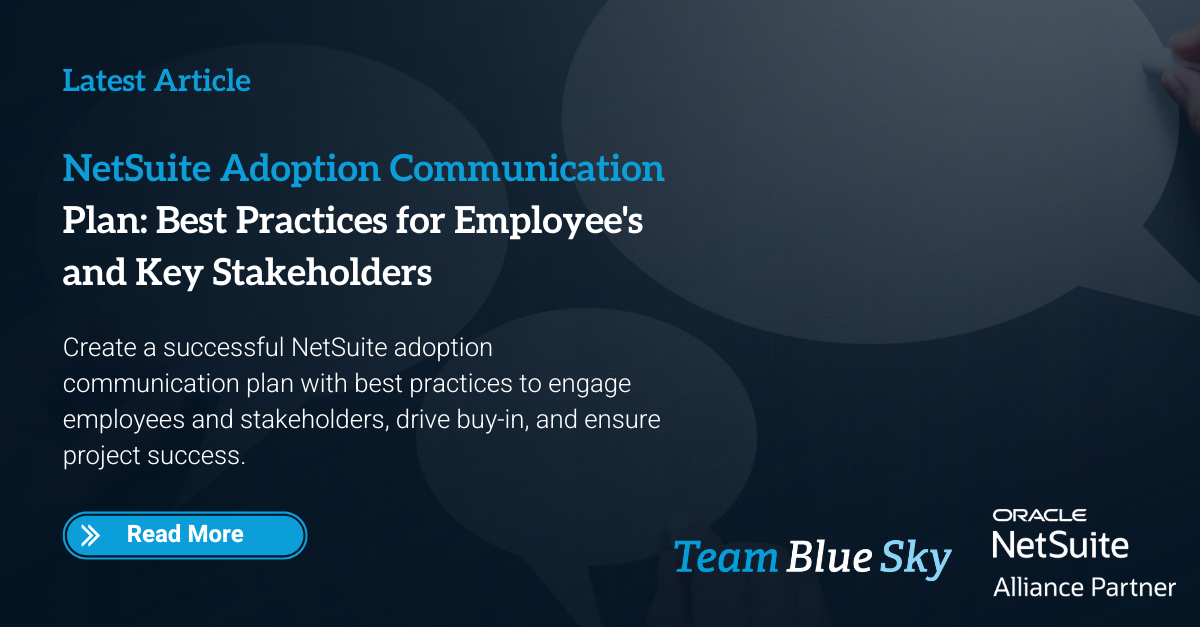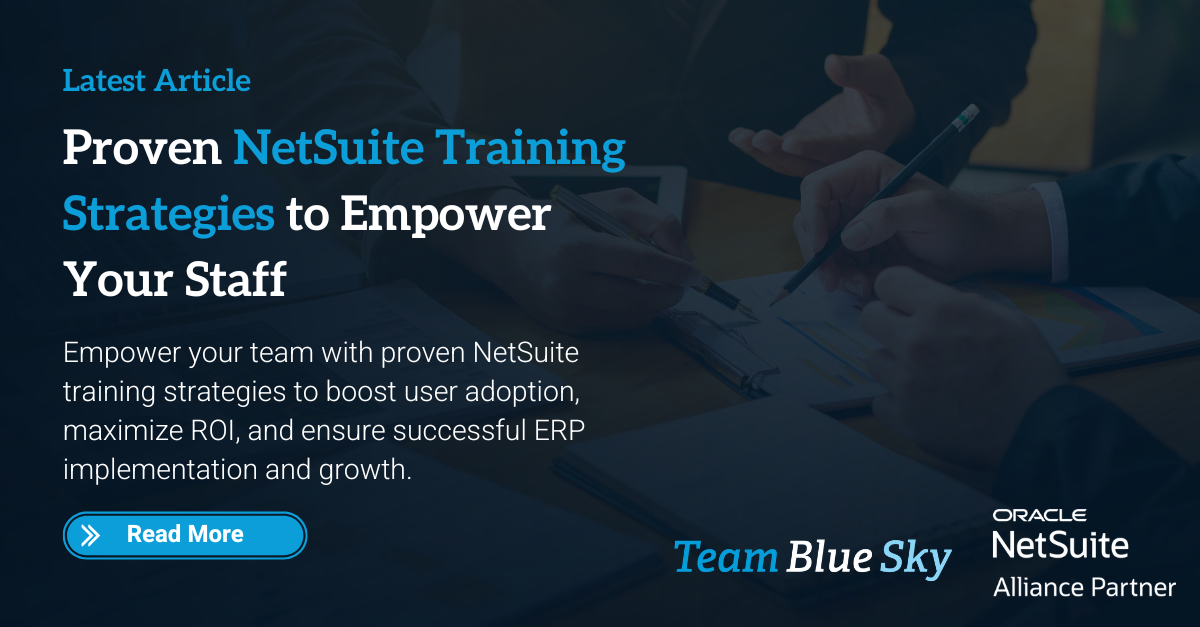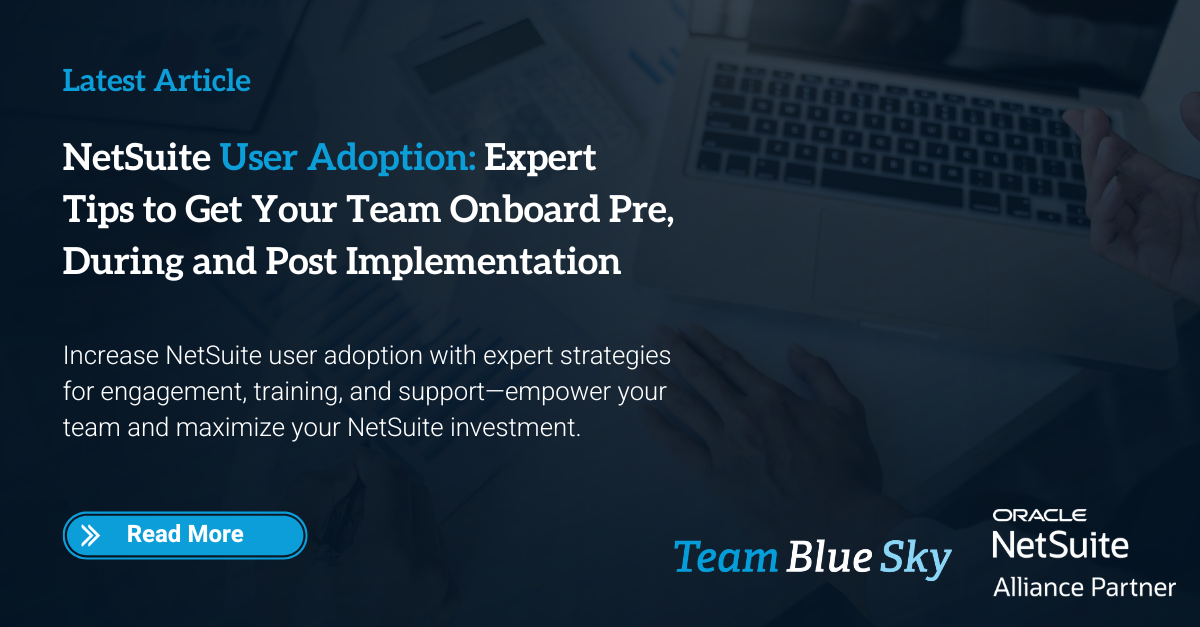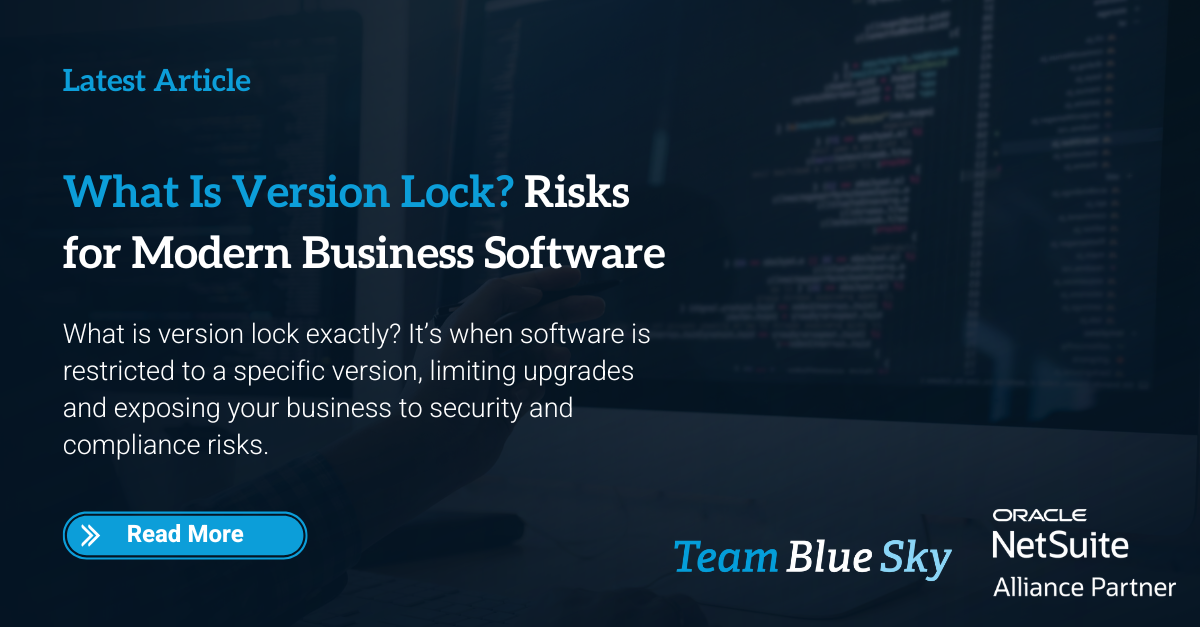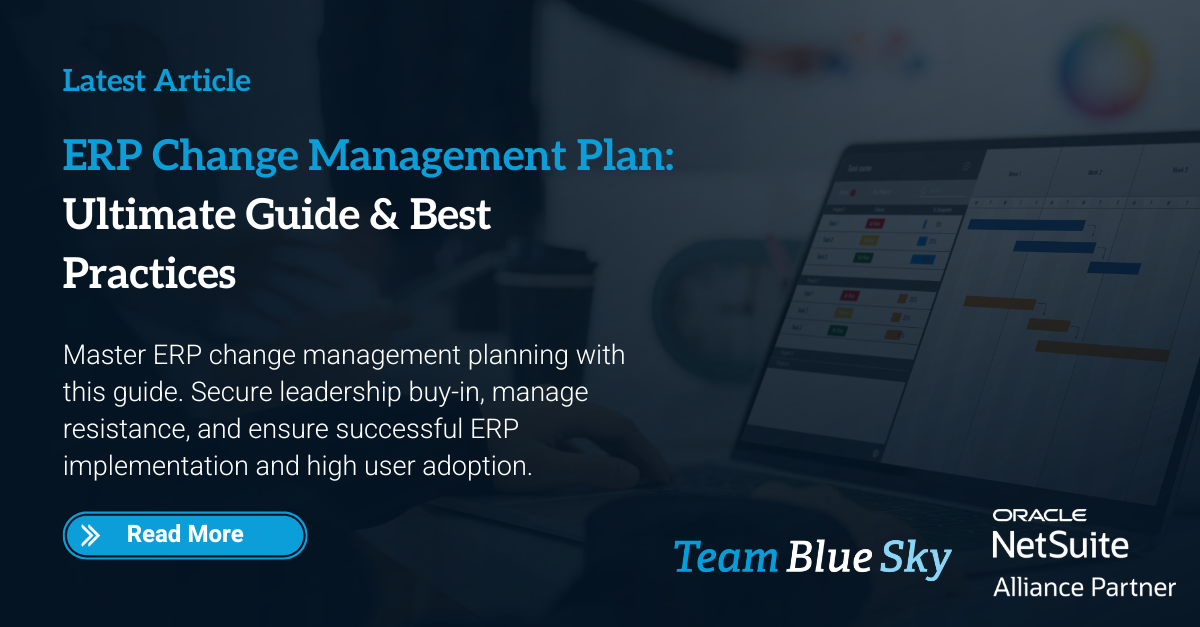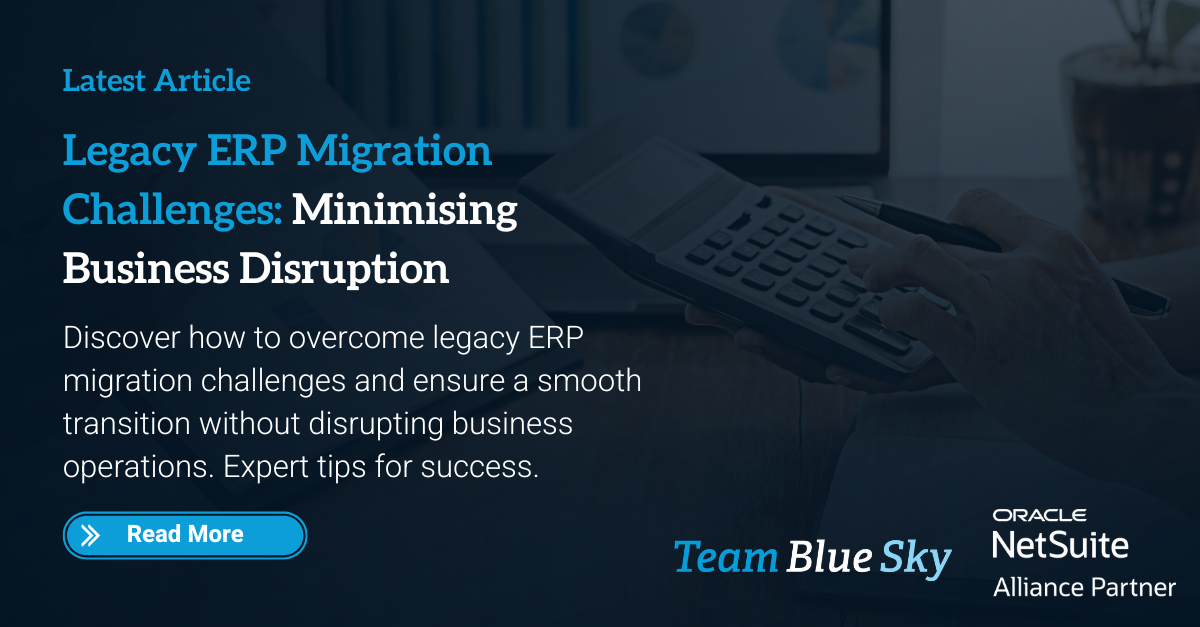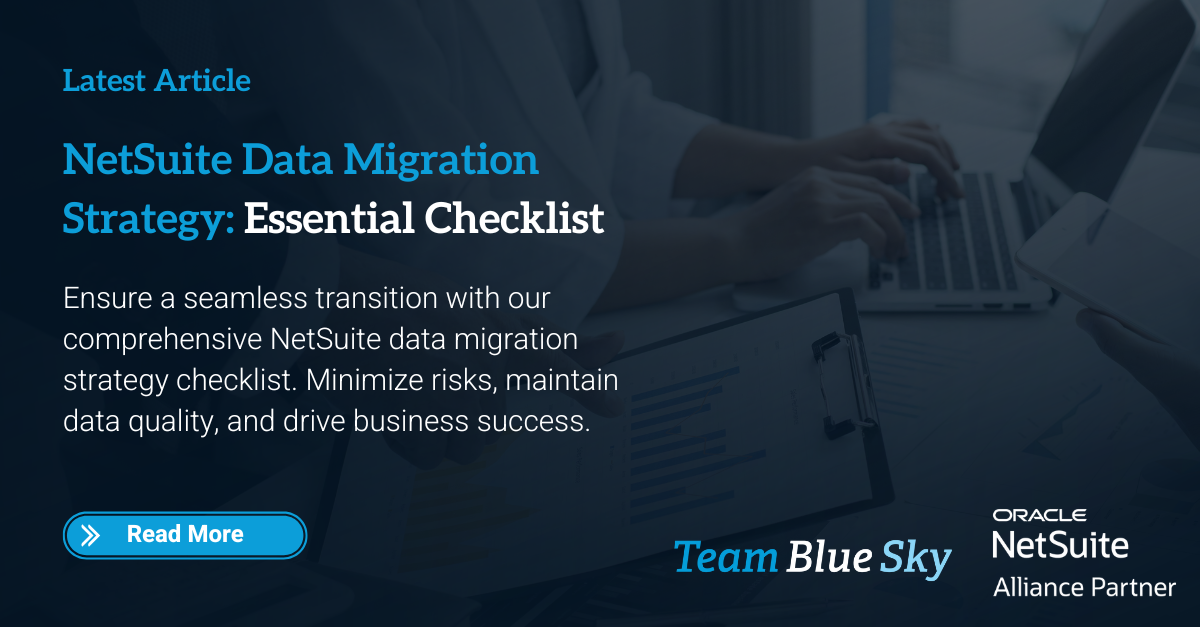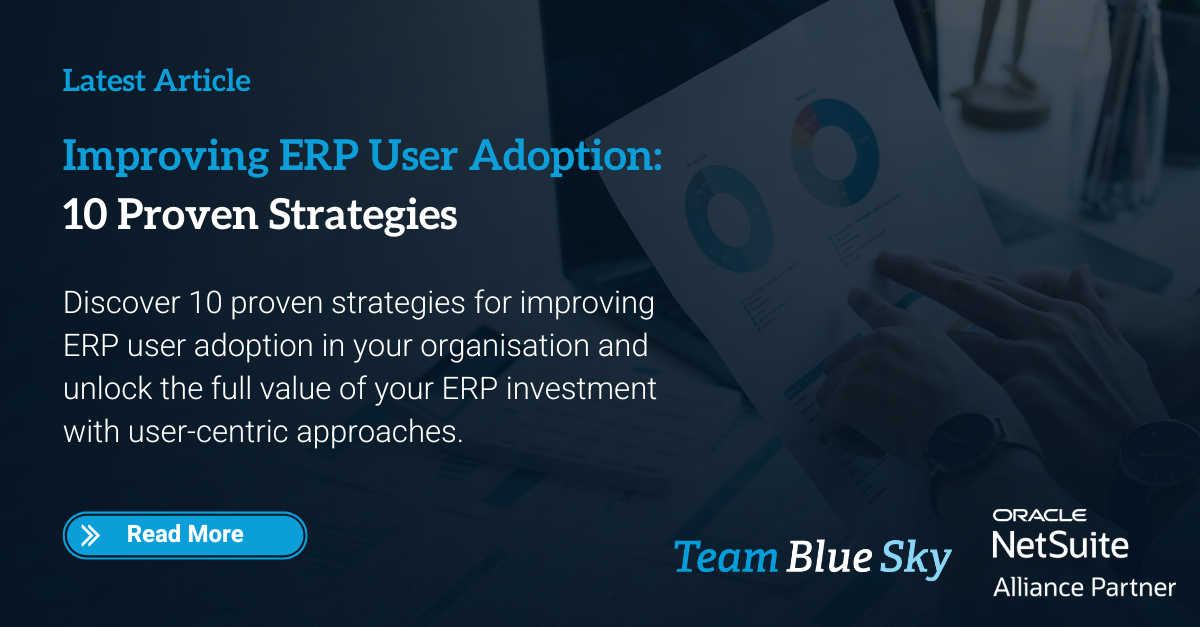Understanding the NetSuite Implementation Timeline: A Comprehensive Guide to Seamless Deployment
A successful NetSuite implementation is essential for building a strong ERP system that drives business growth. However, companies often encounter challenges during the process. This article aims to provide an in-depth understanding of the NetSuite Implementation Timeline and share best practices for a smooth deployment.
Factors Affecting the NetSuite Implementation Timeline
The duration of a NetSuite implementation project can vary significantly due to numerous factors. Understanding these factors helps organisations set realistic expectations and allocate resources accordingly.
Organisation Size
Larger organisations often have more complex business processes, multiple departments, and numerous stakeholders involved in the implementation. As a result, the implementation timeline may be extended to accommodate the additional requirements and coordination efforts.
Aligning Stakeholders
In bigger companies, ensuring that all stakeholders are on the same page can be challenging. Regular communication and project status updates can help maintain alignment and avoid delays in the implementation process.
Business Process Complexity
Organisations with intricate business processes may require more time to configure and customise the NetSuite system. This includes mapping existing processes to the new system, identifying necessary customisations, and integrating third-party applications.
Analysing and Mapping Processes
A thorough analysis of current business processes can help identify areas for improvement and opportunities for optimisation. Mapping these processes to the NetSuite system is vital for ensuring a seamless transition and maximising the benefits of the implementation.
Defining Customisation Requirements
The extent of required customisations can also impact the implementation timeline. The more customisations needed, the longer the configuration and testing phases may take.
Integration with Third-party Applications
Integrating NetSuite with other software systems can add complexity and extend the implementation timeline. Thorough planning and testing of integrations are essential to ensure compatibility and seamless data flow between systems.
Managing Integrations
Choose the right integration partners and tools to streamline the process and minimise the impact on the implementation timeline. Establish clear communication channels and protocols to ensure smooth coordination between the different teams involved in the integration process.
"Organisations that invest in proper planning, testing, and training are 2.5 times more likely to have a successful NetSuite implementation." (Source: Oracle NetSuite Whitepaper)
Key Stages of NetSuite Implementation
Planning
The planning phase involves assessing the organisation's needs, defining project scope, setting goals, and establishing a clear timeline. This stage is crucial for aligning stakeholders, identifying potential challenges, and ensuring adequate resource allocation.
Configuration and Customisation
During this phase, the NetSuite system is tailored to meet the unique requirements of the organisation. This can involve configuring built-in features, developing custom scripts or workflows, and integrating third-party applications to enhance system functionality.
Data Migration
Data migration is the process of transferring existing data from legacy systems to the new NetSuite environment. It's essential to plan and execute data migration carefully, ensuring data accuracy, integrity, and security.
User Acceptance Testing
In the testing phase, the configured NetSuite system is thoroughly tested for functionality, performance, and security. This stage helps identify any issues or gaps that need to be addressed before the system goes live.
Training
Training is vital to ensure that end-users are comfortable with the new system and can efficiently utilise its features. This stage may involve creating training materials, conducting workshops, and offering ongoing support to address user concerns.
Go-live
The go-live phase marks the official launch of the NetSuite system within the organisation. At this stage, the company transitions from its old system to the new NetSuite environment. Post go-live support, including monitoring system performance and addressing any issues that arise, is essential for a successful deployment.
Example NetSuite Implementation Timeline
| Stage | Month Duration | Key Stakeholders | Milestone Outcome |
|---|---|---|---|
| Planning | 1-2 months | Project manager, executives | Project scope, goals and timeline defined |
| Configuration and Customisation | 2-3 months | Project manager, developers, consultants | Configured and customised NetSuite system |
| Data Migration | 1-2 months | Project manager, IT team | Accurate and secure data transfer completed |
| User Acceptance Testing | 1-2 months | Project manager, end-users | System tested and issues resolved |
| Training | 1 month | Project manager, trainers | End-users trained and comfortable with the new system |
| Go-live | 1 month | Project manager, IT team | Successful system deployment and transition |
A Modern NetSuite Implementation Methodology: SuiteSuccess in Action
SuiteSuccess is a comprehensive and innovative implementation methodology specifically designed to streamline the NetSuite implementation process. It combines industry best practices, pre-built configurations, and a unique stairway approach that helps organisations achieve their goals faster and more efficiently.
Four Key Pillars of SuiteSuccess Timeline
Build
SuiteSuccess begins with a strong foundation built on industry-leading practices and years of NetSuite implementation experience. This foundation includes pre-configured modules, KPIs, and workflows that are tailored to the specific needs of various industries.
Engage
During the engagement phase, your NetSuite implementation consultants collaborate closely with the organisation and key stakeholders to understand its unique requirements and objectives. This collaboration ensures that the system is designed and implemented in a way that meets the organisation's specific needs.
Consume
The SuiteSuccess methodology emphasises a rapid and efficient implementation process, allowing organisations to quickly consume the software and start realising its benefits. This is achieved through a phased rollout plan that reduces complexity and accelerates time to value.
Optimise
Continuous optimisation is a critical component of SuiteSuccess. After the initial implementation, organisations receive ongoing support and access to new features and enhancements, ensuring that the system evolves with the company and drives long-term success.
Benefits of Using SuiteSuccess
Faster implementation time
SuiteSuccess is designed to significantly reduce the time it takes to implement NetSuite. With pre-built configurations and a well-defined methodology, companies can get up and running much more quickly compared to traditional implementation approaches.
Reduced risk
The SuiteSuccess methodology incorporates industry best practices and lessons learned from numerous successful implementations. This reduces the risk of common implementation pitfalls and ensures a smoother transition to the new system.
High Implementation Success Rate
SuiteSuccess focuses on delivering tangible business outcomes by aligning the implementation process with the organisation's objectives. This approach helps companies maximise the value of their NetSuite investment and drive lasting business growth.
Companies that adopt the SuiteSuccess methodology report a 60% faster implementation time and a 45% reduction in implementation costs." (Source: Forrester Consulting Study)
Creating a NetSuite Implementation Project Plan: A Roadmap to Success
A well-structured NetSuite implementation project plan is essential for ensuring a smooth and successful deployment. It serves as a roadmap, outlining the steps and activities that need to be completed throughout the implementation process. Here's a closer look at the key components of a successful project plan and best practices for developing one.
Defining the Scope
The first step in creating a project plan is to define the scope of the implementation. This involves identifying the specific modules, features, and customisations that will be included in the project. It's essential to have a clear understanding of the organisation's requirements and priorities to ensure the scope aligns with its business objectives.
Identifying Stakeholders
A successful implementation project requires the involvement and support of various stakeholders from different departments within the organisation. Identifying these stakeholders early on and understanding their roles and responsibilities is crucial for fostering collaboration and ensuring that everyone is on the same page.
Key stakeholders may include:
- Project managers
- Business analysts
- Subject matter experts
- IT personnel
- Finance and operations teams
- End-users
- Setting Milestones and Deadlines
Best Practices for a Creating a NetSuite Implementation Project Plan
Clear communication
Effective communication is vital for keeping stakeholders informed and engaged throughout the implementation process. Establish regular meetings, status updates, and communication channels to facilitate information sharing and address any questions or concerns that may arise.
Regular progress tracking
Monitoring and tracking the progress of the project is essential for ensuring that it stays on schedule and within scope. Use project management tools and dashboards to track tasks, milestones, and deadlines, and make adjustments as needed to address any challenges or changes in priorities.
Avoiding a NetSuite Implementation Rescue: Identifying and Overcoming Implementation Challenges Early On
Although NetSuite is designed to be a powerful and flexible ERP solution, implementation failures can occur for a variety of reasons. However, by identifying potential challenges early on and implementing preventive measures, organisations can avoid the need for a NetSuite rescue operation. In this section, we'll discuss some common implementation challenges and the steps that can be taken to overcome them.
Common Implementation Challenges
- Inadequate planning and resource allocation
- Insufficient testing and training
- Poor communication and stakeholder engagement
- Misaligned expectations and unclear objectives
- Lack of ongoing support and monitoring
Preventive Measures to Avoid NetSuite Rescue
Comprehensive Planning and Resource Allocation
A well-defined project plan, including clear goals, milestones, and deadlines, is essential for a successful implementation. Ensure that adequate resources, such as personnel, budget, and time, are allocated to the project to prevent potential bottlenecks and delays.
Thorough Testing and Comprehensive Training
Conduct rigorous user acceptance testing (UAT) to identify any functional or performance issues that need to be addressed before going live. Additionally, invest in comprehensive training programs to ensure end-users are comfortable with the new system and can effectively utilise its features.
Clear Communication and Stakeholder Engagement
Maintain open lines of communication with all stakeholders, including project managers, end-users, and implementation partners. Regularly update stakeholders on project progress and any changes to the project plan, ensuring that everyone is on the same page and working towards a common goal.
Aligning Expectations and Setting Clear Objectives
Before embarking on the implementation journey, ensure that all stakeholders have a clear understanding of the project's objectives and expected outcomes. Misaligned expectations can lead to dissatisfaction and potential implementation failure. Establishing a shared vision and setting realistic goals can help prevent this issue.
Plan for Ongoing Monitoring and Support
After the system goes live, provide ongoing support and monitoring to address any issues that may arise. This may involve regular system performance assessments, addressing end-user concerns, and providing additional training as needed. By being proactive in monitoring and support, organisations can mitigate potential problems and ensure the long-term success of their NetSuite implementation.
Conclusion
In conclusion, a successful NetSuite implementation is a critical factor in driving business growth and efficiency. By understanding the factors that affect the implementation timeline, following industry best practices, and proactively addressing potential challenges, organisations can significantly improve their chances of a seamless and successful deployment. The SuiteSuccess methodology offers a streamlined approach that accelerates time to value and ensures long-term success.
At TeamBlueSky, we are dedicated to helping organisations maximise the benefits of their NetSuite investment. Our experienced consultants will guide you through each stage of the implementation process, providing expert advice, support, and best practices to ensure your project's success. Don't leave your NetSuite implementation to chance - partner with TeamBlueSky to achieve your business objectives and unlock the full potential of the NetSuite platform.
Ready to embark on a successful NetSuite implementation journey? Contact TeamBlueSky today to schedule a consultation and discover how we can help your organisation thrive.
NetSuite Implementation Timeline FAQs

Henry Sack
General Manager

With over 12 years of experience as a NetSuite implementation consultant, Henry Sack leads TeamBlueSky’s team of NetSuite and accounting experts in his role of General Manager.
TeamBlueSky is a leading Australian
NetSuite Alliance Partner whose mission is to provide critical
NetSuite BPO and
Payroll services to NetSuite clients who are wanting to simplify their
back office processes and partner with a leading
NetSuite administration expert.
TeamBlueSky have also partnered with global Suite Developer Network partners to offer local solutioning, implementation and support services for global NetSuite SuiteApps.




